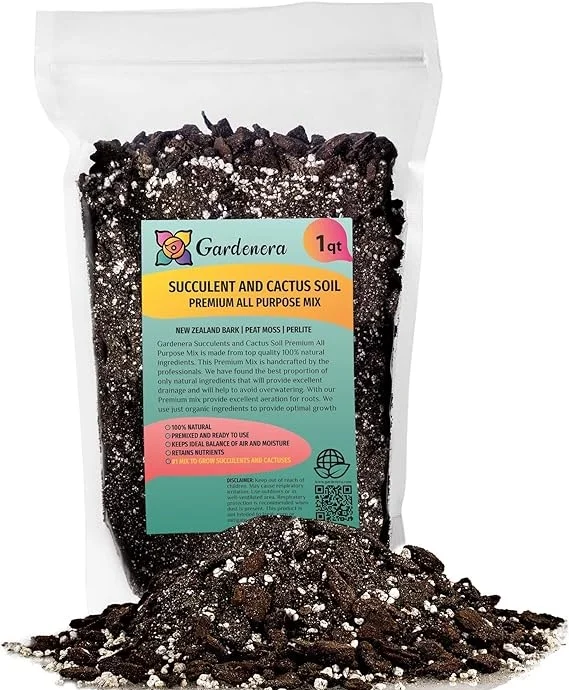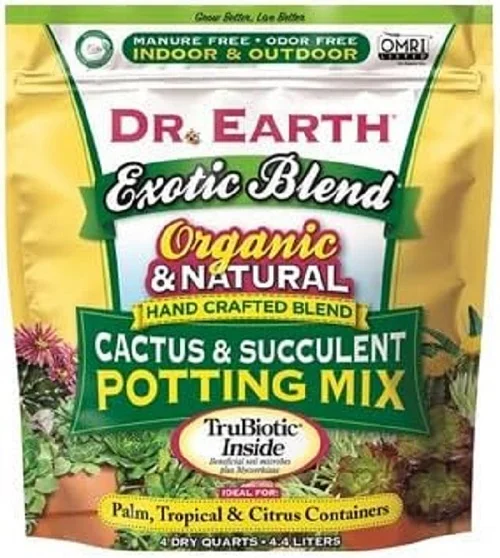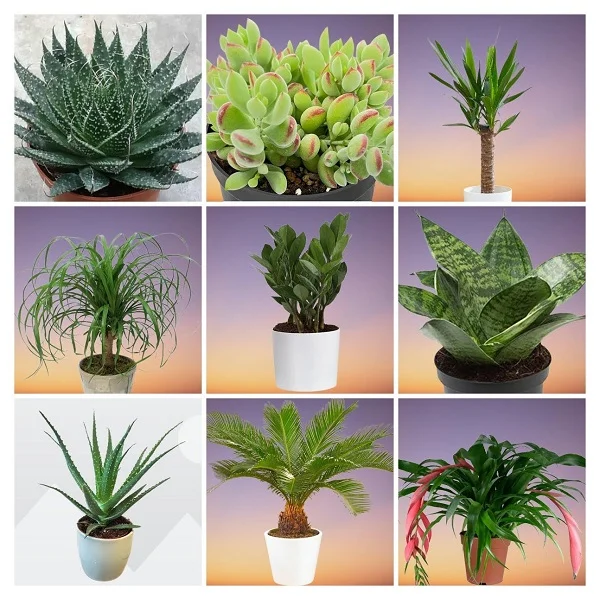Bear's Paw Succulent (Cotyledon tomentosa) Care Indoors, Propagation & Problems
Some links in this post may be affiliate links
Cotyledon tomentosa (Bear's Paw Succulent) grows best in bright light with some sunlight, average warmth and humidity and loose, fast draining soil that is low in organic matter coupled with monthly feeding in the growing season.
Cotyledon tomentosa also called Bear Claw Succulent or Cat Paw Succulent is among the popular succulent plants and bears large, chunky, ovate, fuzzy, light-green leaves.
Bear's Paw Succulent leaves have prominent 'teeth' at the tips which turn deep red in bright light and look-like a bears claws and this gives this plant its common name.
Cotyledon tomentosa has two subspecies; Cotyledon tomentosa subs. tomentosa and Cotyledon tomentosa subs. ladismithiensis. The latter is smaller, less branched and bears a brown peeling bark while the former is larger, highly branched and has green hairy branches.
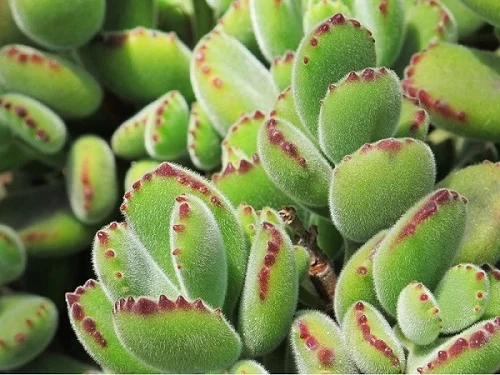
Botanical name: Cotyledon tomentosa
Family: Crassulaceae
Common names: Bear's Paw Succulent, Bear Claw Succulent, Cat Paw Succulent
Origin
Cotyledon tomentosa is native to South Africa in the Little Karoo arid region. It is found growing in quartz fields where the soils are very porous and well-drained.
How big do Bear's Paw Succulent get?
Bear's Paw Succulent grows to a height 1 foot and and about 2 feet wide.
Flowers
Bear's Paw Succulent Succulent blooms in spring with large orange bell-shaped flowers which are borne on a stalk above the foliage.
Is Cotyledon tomentosa toxic?
Cotyledon tomentosa like other Cotyledon plants is considered toxic to both humans and pets. As outlined by Wikipedia, some plants in the Cotyledon Genus have been found to cause stock losses among goats, pigs and poultry.
Related Plants
Bear's Paw Succulent is related to the following plants which are also great plants for the home.
1. Cotyledon undulata (Silver Crown Plant)
2. Cotyledon campanulata (Bell-flowered Cotyledon)
3. Cotyledon pendens (Cliff Cotyledon)
4. Cotyledon orbiculata (Pig's Ear Plant)
5. Cotyledon velutina (Velvet Cotyledon)
Where to Buy
If you would like to add Bear's Paw Succulent to your collection, you may obtain these plants from Etsy (Link to Etsy) or from Amazon (Link to Amazon).
How to Care for Cotyledon tomentosa Indoors
To care for Cotyledon tomentosa indoors, give it bright light with at least 4-6 hours of direct sunlight, warmth of 15-260C, humidity of 50-55% and loose, fast draining soil that is low in organic matter coupled with monthly feeding during the growing season.
Bear's Paw Succulent repotting is only needed when it becomes pot-bound or when the potting medium is completely broken down. Pruning is necessary to keep the plant neat and to minimize pest and disease infestations. Keep reading for more on these growing conditions and how to provide them.
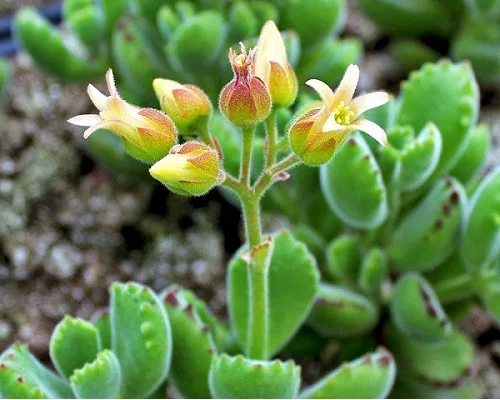
Watering
How often should I water Bear's Paw Succulent?
Like all succulents, Bear's Paw Succulent hates overwatering and soggy soil. It is best watered by the 'soak and dry' method.
Water your Cotyledon tomentosa deeply in spring and summer until water comes out through the drainage hole and allow the soil to dry out between waterings. Avoid too much water as it can lead to rotting, yellowing and leaf drop.
Cut down on watering in fall and winter as growth is minimal at this time, thus, the plant does not need a lot of water for growth. Do not allow the soil to dry out completely to prevent wilting, drooping, yellowing and leaf fall.
Only use water that is at room temperature to avoid cold shock as it can result in stunted growth and leaf drop. Use chlorine-free water to prevent browning of leaves.
Ensure that the pot has a drainage hole and the soil is fast-draining to prevent waterlogging as it can lead to rotting and death of the plant.
Be careful not to wet the foliage to avoid fungal diseases or water from the bottom instead. Always empty the bottom saucer (plate) once the plant has absorbed enough water.
Light Requirements
Do Bear's Paw Succulents like full sun?
Bear's Paw Succulent likes bright light with at least 4-6 hours of morning or afternoon sunlight. Keep it away or shield it from hot direct sunshine to prevent scorching of the leaves.
Too little light can result in legginess, yellowing and leaf drop. Therefore, if the natural lighting is not adequate, you may use full spectrum grow lights to supplement it.
Rotate the pot regularly to make sure that the plant receives light on all sides for even growth and prevent leggy growth.
You may also grow your Cotyledon tomentosa outdoors, however, gradually acclimate it and place it in a shaded place first to prevent scorching of the leaves.
Temperature & Humidity
Cotyledon tomentosa flourishes in a warmth of 15-260C in spring and summer and a minimum of 50C in fall and winter.
Keep it away from sources of drafts like windy doors and windows, AC units, hot air vents, stoves among others; prolonged exposure to drafts can result in slowed growth, leaf drop and death of the plant.
Bear's Paw Succulent has no need for extra humidity; a humidity of 50-55% is ideal for this plant. Maintain good air circulation and do not mist the plant to minimize fungal disease infestations which are prevalent in damp, poorly ventillated conditions.
Fertilizer
Feed Cotyledon tomentosa with a cactus and succulents fertilizer monthly in spring and summer to boost healthy growth.
Do not feed in fall and winter as growth is reduced and feeding at this time can lead to fertilizer burn and eventual death of the plant.
To get rid of excess salts, regularly run a stream of water through the soil until it drains through the drainage hole. Repeat the process several times to get rid of most of the salts.
Potting Medium
The best potting soil for Cotyledon tomentosa should be coarse, low in organic matter and one that drains fast to prevent it from holding too much water. The soil should be loose enough to allow water to drain out easily. Most Cactus and succulents soils are ideal for this plant.
Repotting
Repot your Cotyledon tomentosa at the beginning of the growing season (spring and early summer), only when pot-bound or when the potting medium has completely broken down.
Select a pot that is 1 size larger than the current one to avoid overpotting and retention of excess moisture. Ensure that the pot has a drainage hole and the soil is well-draining to prevent waterlogging which can lead to root-rot and eventual loss of the plant.
Use a clay pot rather than a plastic or ceramic pot as a clay pot is porous and allows the soil to dry out faster to keep it from staying wet for too long. Take a look at these clay (terracotta) pots available on Amazon.
Make sure that the soil is dry before repotting. Take the plant out of its pot and brush off soil from the roots. Snip off any dead or dry roots and treat the wounds with a fungicidal solution.
Position the plant in the center of its new pot and backfill with fresh, loose, fast-draining soil while spreading the roots as you fill the pot. Do not fill the pot completely but allow about 1 in. unfilled for watering purposes.
Replace the plant to its display position and keep it dry for about 5-7 days to minimize the risk of rot-root disease.
Pruning & Grooming
Pruning Cotyledon tomentosa involves removal of any dead or diseased leaves to keep it neat and also discourage pest and disease infestations. Snip the leaves at the base with a sterilized knife or pair of scissors to prevent diseases transmission.
Minimize the number of cuts as much as possible to avoid unnecessary injuries to reduce fungal disease infestations. Keep the leaves clean by brushing with a soft brush to get rid of dust as well as to discourage pest infestations.
Cotyledon tomentosa Propagation
Bear's Paw Succulent propagation is done from stem cuttings and leaf cuttings at the beginning of the growing season (spring to early summer) when in active growth to hasten establishment.
1. Cotyledon tomentosa propagation from stem cuttings
- Take 3-5 inches stem cuttings from a healthy plant and allow the cutting to dry out (callus) for a few days to prevent rotting.
- Fill a small pot with a fast-draining soil and moisten it slightly. Use a pot with a drainage hole to avoid rotting.
- Once callused, insert 2-3 inches of the lower cut end of the stem cuttings in the moist soil.
- Place the set up in a well-lit, warm place away from direct sunlight to prevent scorching.
- Ensure good air circulation to discourage fungal diseases.
- Maintain the soil slightly moist until the stem cuttings have rooted. Rooting may take upto 4 weeks.
- Allow substancial growth before transplanting the new plant into a pot one size larger after which you can begin routine care.
2. Bear's Paw Succulent leaf propagation
- Take leaf cuttings complete with the petiole from a healthy plant. Allow the leaf cutting to dry out (callus) for a few days to prevent rotting.
- Fill a rooting container with a fast-draining soil and wet it slightly. Ensure the container has a drainage hole to avoid rotting.
- When calloussed, lay the leaf cutting on moistsoil while ensuring that the cut end does not come into contact with the soil to prevent rotting.
- Postion the set up in a warm, well-lit place away from direct sunlight to prevent scorching of the leaf cuttings.
- Maintain the soil slightly moist through out and ensure that there is good air circulation to prevent fungal diseases.
- With time, the leaf cutting will form roots and eventually a small rosette will form at the base of the leaf cutting. This may take from 4-6 weeks.
- Allow substancial growth of the rosette before transplanting the new plant into its own pot after which you can begin routine care.
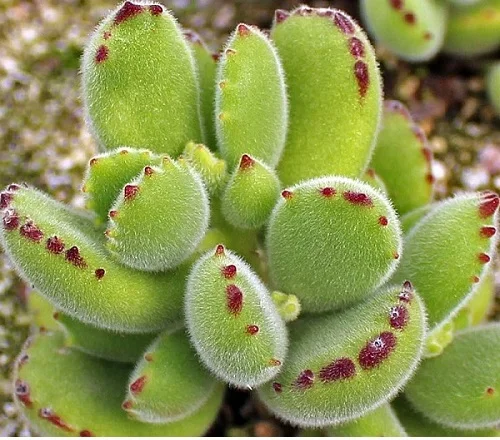
Cotyledon tomentosa Problems & Solutions
Bear's Paw Succulent problems are leaf fall, leggy growth, yellow leaves, wilting & droopy leaves, pests and diseases among others. Keep reading for more on these problems and how to fix them.
Leaf fall
Leaf fall on Bear's Paw Succulent is caused by inconsistent watering, soggy soil, too little light, drafts, use of cold water, nutrients deficiency, pest infestation or aging.
How to fix it
Inconsistent watering: Do not water on a schedule. Water when the top 2-3 inches of soil dry out but never allow the soil-ball to dry out completely.
Soggy soil: Use well-draining soil and a pot with a drainage hole.
Drafts: Keep the plant away from sources of drafts like windy doors, drafty windows, AC units, hot air vents among others.
Insufficient light: Position the plant in bright light with 4-6 hours of sunlight or use a grow light if you do not have enough light in your home.
Nutrients deficiency: Feed the plant with a cactus and succulents fertilizer every month in spring and summer.
Use of cold water: Use water that is at room temperature to prevent cold shock.
Pest infestations: Regularly inspect the plant for pests and carry out timely control measures.
Aging: This is a natural process. As the lower leaves mature, they turn yellow, brown and eventually fall off.
Leggy growth
Leggy growth on Cotyledon tomentosa is caused by too little light, nutrients deficiency or underwatering.
How t fix it
Too little light: Position the plant in bright light with 4-6 hours of sunlight or instal a grow light if the natural lighting is not enough.
Nutrients deficiency: Feed the plant with a cactus and succulents fertilizer every 4 weeks in spring and summer.
Underwatering: Maintain the soil moderately moist in spring and summer and slightly moist in fall and winter. Never allow the soil to dry out completely.
Yellow leaves
Some of the causes of yellow leaves on your Cotyledon tomentosa are too little light, soggy soil, inconsistent watering, extreme temperatures, nutrients deficiency or aging.
How to fix it
Too little light: Position the plant in bright light with 4-6 hours of direct sunlight or use a grow light if you do not have sufficient light in your home.
Soggy soil: Use well-draining soil and a pot that has a drainage hole.
Inconsistent watering: Water when the top 2-3 inches of soil dry out but do not allow the soil to dry out completely.
Extreme temperatures: Keep the plant away from sources of drafts like hot air vents, AC units, hot surfaces, windy doors and others.
Nutrients deficiency: Feed the plant monthly in spring and summer with a cactus and succulents fertilizer.
Aging: This is a natural process. As the lower leaves mature, they turn yellow, brown and eventually die.
Wilting & droopy leaves
wilting & droopy leaves on Cotyledon tomentosa are caused by underwatering, soggy soil, drafts or pest infestations.
How to fix it
Underwatering: Do not water on a schedule. Water when the top 2-3 inches of soil dry out but do not allow the soil to dry out completely.
Soggy soil: Use well-draining soil and a pot with a drainage hole.
Drafts: Keep the plant away from sources of drafts like windy doors, drafty windows, AC units, hot air vents among others.
Pest infestations: Regularly inspect the plant for pests and carry out timely control measures.
Pests
Common pests on Cotyledon tomentosa are scale insects, mealybugs and spider mites which are prevalent on weak plants and in dry, stuffy conditions.
How to fix it
- Isolate the affected plant to prevent spread to the rest of the plants.
- Treat the infested plant with neem oil or an insecticidal soap as per the manufacturers' recommendations.
- Regularly check underneath and between the leaves for these pests and carry out timely control measures.
- Maintain the plant well pruned and raise humidity to minimize the pest infestations.
Diseases
Cotyledon tomentosa is prone to powdery mildew which is prevalent in overwet conditions coupled with poor air circulation.
How to fix it
- Isolate the affected plant to minimize spread to other plants.
- Treat the affected plant with neem oil as indicated by the manufacturer.
- Improve ventilation and make sure that there is good air circulation for the plant.
- Water from the bottom to avoid wetting the foliage.
- Use a pot with a drainage hole and soil that drains easily to prevent it from getting soggy.
You liked it? Share on social media.
Related Content
Amazon Associates Disclosure
Homeplantsguide.com is a participant in the Amazon Services LLC Associates Program, an affiliate advertising program designed to provide a means for sites to earn advertising fees by advertising and linking to amazon.com.

